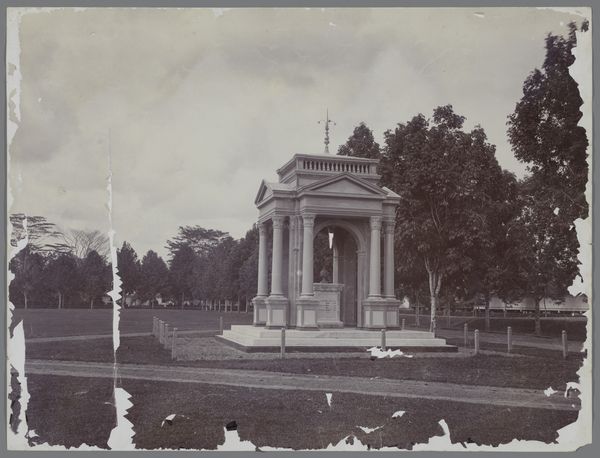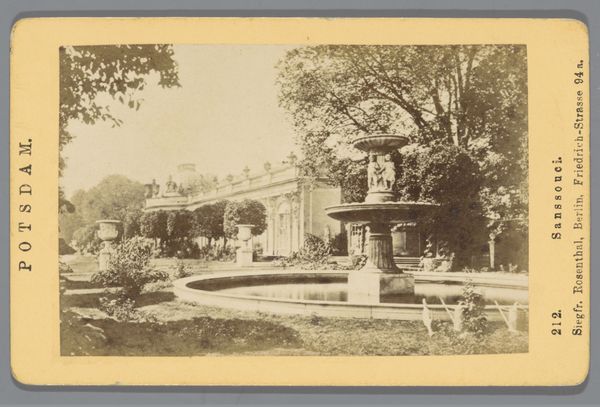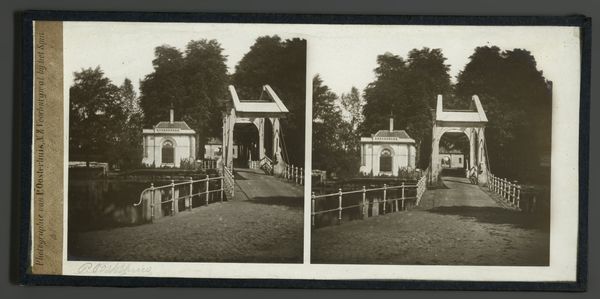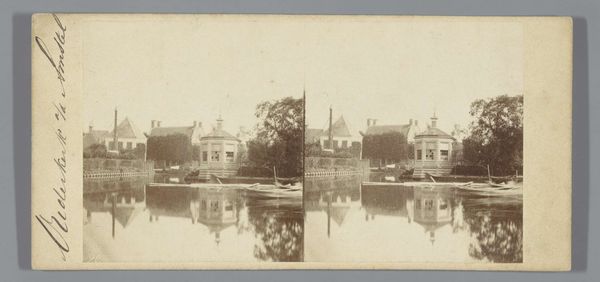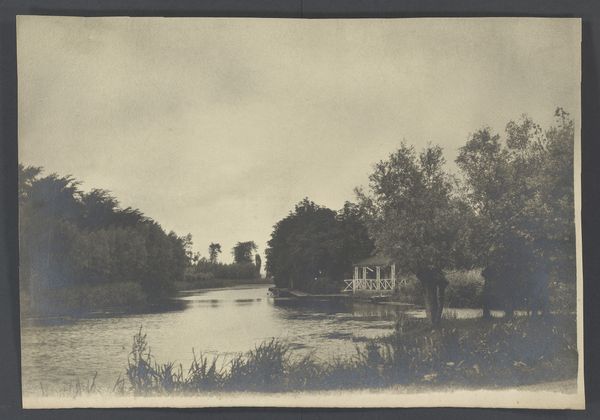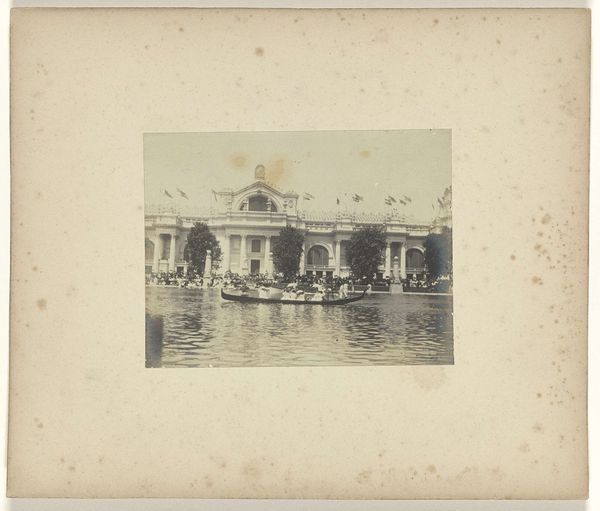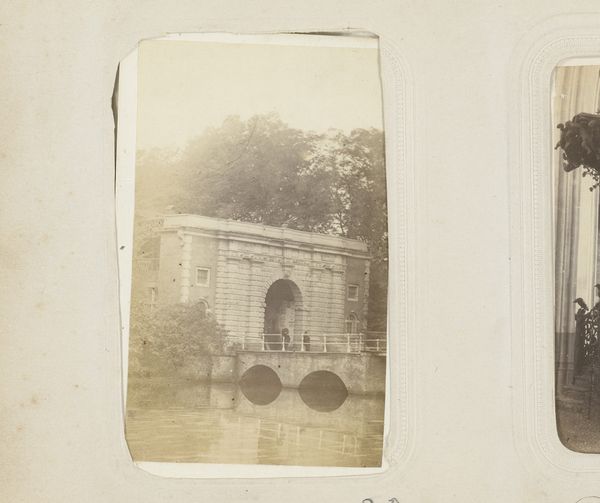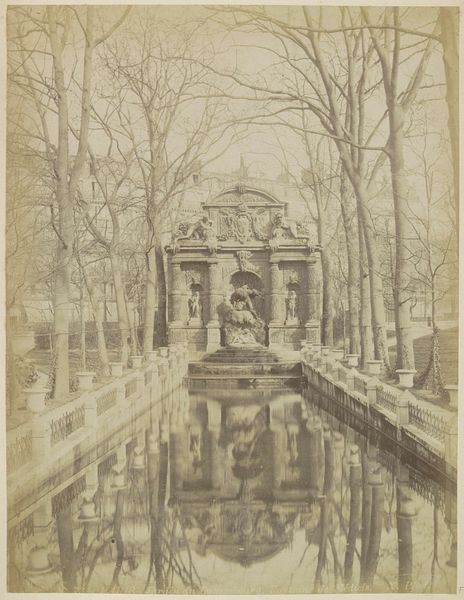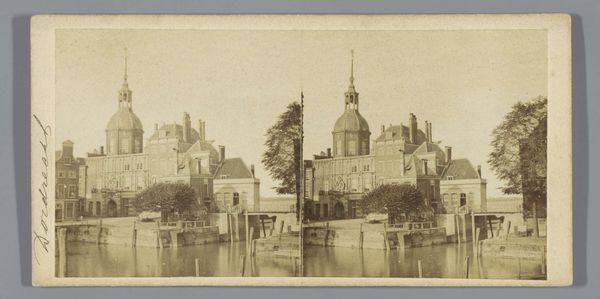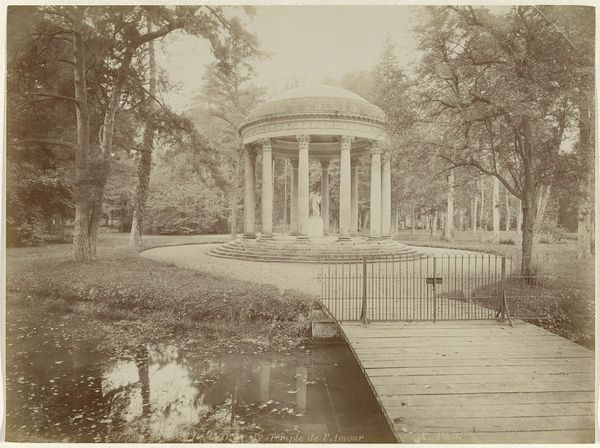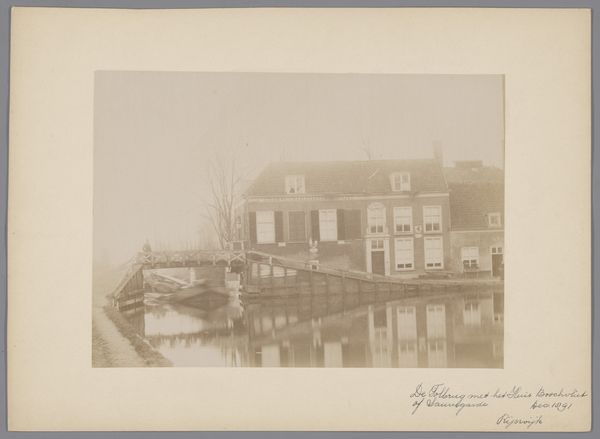
Dimensions: height 62 mm, width 101 mm
Copyright: Rijks Museum: Open Domain
Curator: George Lodewijk Mulder captured this “View of a City Gate in Alkmaar” sometime between 1859 and 1868. It’s a gelatin-silver print photograph. Editor: It's strikingly symmetrical. The dark reflections in the water anchor the composition, and that arched gateway—it feels almost theatrical, like a stage entrance. Curator: Indeed, Mulder's work often intersected with Romanticism, highlighting picturesque and emotionally evocative scenes. Consider the labor and social context: Photography at this stage was complex, reliant on skilled practitioners and access to resources. Gelatin-silver prints allowed for finer detail and mass reproduction, democratizing access to imagery. Editor: I’m drawn to the light and shadow play, especially the gradations on the arch and in the water. The texture, too—you can almost feel the stonework despite the distance. Semiotics comes into play here; the archway itself signifies passage, transition…perhaps even aspiration. Curator: But the gate, like other remnants of fortifications, are ultimately built for defense and control. So, Mulder gives us a vision filtered by technical and social forces and we should be conscious of the photographic means of image-making and distribution which, from the start, served a particular kind of viewership and desire for the photographic image. Editor: A good point. Even the composition—the stillness of the water, the carefully framed architecture—presents a constructed ideal. The reflections are not simply reflections, they become symbolic weights. Curator: Yes, they mirror but do not perfectly replicate, acting as indexical documents with purpose and inflection, where labor practices are invisibilized. The final image served a new and expanding urban and middle-class population that sought out pictures like these. Editor: I keep circling back to that light. It models the stone, giving it such palpable form, contrasting with the amorphous, ever shifting reflection beneath. Curator: Studying this piece brings me to new ways of seeing the development of photography, but reminds us how photography is intertwined with shifts in the class structure and the economics of 19th century European societies. Editor: It underscores, too, the dialogue between technique, art, and the changing structures of feeling during the romanticism movement. Curator: A worthwhile observation. Thanks. Editor: Thank you.
Comments
No comments
Be the first to comment and join the conversation on the ultimate creative platform.
